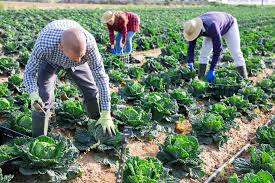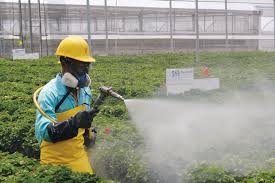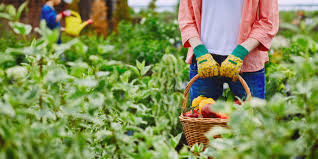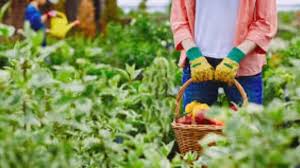Horticultural crops are considered specialised crops due to the unique methods used in their production. These crops require specific practices such as pruning and staking, along with conventional farming operations like land preparation, watering, and fertiliser application. This article explains both conventional and specialised practices involved in the production of horticultural crops.
Read Also: Best Snail Rearing Stocking Density for Best Results
A. Common and Specialised Practices in Horticultural Crop Production

The methods adopted for producing horticultural crops vary depending on the crop type. However, general practices such as land preparation, weeding, and fertiliser application are applicable. Specialised practices like pruning, staking, budding, grafting, and mulching are essential for certain crops.
The production stages of horticultural crops from establishment to post-harvest handling—include the following:
1. Land Preparation for Horticultural Crop Production: Land preparation involves clearing and tilling the land before sowing. This may be done manually (using machetes or hoes), mechanically (using bulldozers or stumpers), or chemically (with non-selective herbicides in no-till systems).
Bush burning may also be used to eliminate fallow vegetation or debris. Economically useful trees such as palms, fruit trees, nitrogen-fixing trees, and exportable timber are usually preserved.
Tillage involves turning the topsoil either manually (minimum tillage) or mechanically (conventional tillage) to create a favourable soil environment. Primary tillage loosens and mixes the soil, while secondary tillage refines it and shapes planting rows.
Tools used include mouldboard ploughs, harrows, hoes, subsoilers, and rollers. No-till farming utilises herbicides, GMO crops, and special equipment to plant without disturbing the soil. Tillage may also involve hoofed animals, wooden ploughs, or tractors.
2. Planting and Transplanting in Horticultural Crops: Planting is done by directly sowing seeds through broadcasting, drilling, or using planting sticks or mechanical planters. Vegetative propagation materials are often planted manually or mechanically. Some crops, such as oil palm and tomato, require nursery or pre-nursery stages. Transplanting involves moving seedlings to the field at the right time, with adequate spacing for optimal yields.
3. Watering and Irrigation in Horticultural Crop Production: Transplanted crops need ample watering immediately after transplanting. Irrigation is essential for dry season cultivation and promotes healthy growth. Excess irrigation and poor drainage should be avoided, as they lead to waterlogging and salt accumulation. Watering methods include bucket irrigation, drip irrigation, sprinkler systems, sub-irrigation, and in-ground methods.
4. Application of Fertiliser in Horticultural Crops: Fertilisers are either inorganic (chemical) or organic and supply essential nutrients to the soil. Types include nitrogen (e.g. urea), phosphorus (e.g. SSP, TSP), potassium (e.g. KCl), and mixed fertilisers (e.g. NPK 15-15-15). Methods of application include broadcasting, banding, and topdressing. Micronutrients may be applied as foliar sprays.
Organic fertilisation includes manuring, green manuring, and composting. Liming is done to correct soil pH using materials like CaCO₃, CaO, or wood ash. In closed systems, fertigation is used for simultaneous application of water and fertilisers.
5. Mulching to Protect Horticultural Soils: Mulching involves covering the soil with organic or inorganic materials to prevent degradation. Organic mulches include straw, prunings, and compost, while inorganic types include paper, stones, and plastic films. It helps conserve soil moisture, suppress weeds, and maintain soil temperature.
6. Weed Management in Horticultural Crop Fields: Weed management includes prevention, control, and eradication:
i. Preventive Approach – Prevents weed infestation through quarantine, clean seeds, crop sequence planning, and sanitation.
ii. Eradication Approach – Aims for complete weed removal, though impractical in agro-ecosystems due to high costs and ecological impacts.
iii. Control Approach Keeps weeds at tolerable levels using cultural, mechanical, chemical, and biological methods.
7. Cultural control: includes clean land preparation, crop rotation, and mulching.
8. Mechanical control: involves hand weeding, hoeing, mowing, and burning.
9. Chemical control: uses herbicides, which may be selective or non-selective and applied at various crop stages.
10. Biological control: employs natural enemies such as insects, fungi, or fish to suppress weed growth.
11. Integrated Weed Management: combines methods economically to ensure weeds are kept below harmful levels while protecting the environment.
Read Also: Seasonal and Daily Management Practices for Snail
B. Pest and Disease Control in Horticultural Crop Production

Pests (insects, nematodes, mammals) and diseases (fungi, bacteria, viruses) limit crop yields. Control strategies include:
1. Cultural methods like crop rotation, sanitation, and correct sowing time
2. Resistant varieties bred for disease resistance
3. Chemical methods using pesticides and fungicides
4. Legislative measures such as plant quarantine and seed certification
Fungicides may be used as soil sterilants, protectants, or systemics. Application is often done post-planting.
C. Pruning of Horticultural Crops
Pruning removes unwanted or diseased branches to shape plants and improve health. It can also rejuvenate old trees. Pruning should be done carefully using appropriate tools such as pruning saws, knives, or secateurs. Treated cuts prevent infection and promote plant recovery.
D. Staking in Support of Climbing or Weak-Stemmed Crops
Staking supports plant stems or vines, commonly used in crops like yam and tomato. In yam, it enhances exposure to sunlight. In tomato, it reduces fruit rot caused by soil contact.
Harvesting and Post-Harvest Practices in Horticultural Crop Production

Harvesting ensures crop produce is removed at the right maturity for processing or marketing. The method depends on crop type, growth habit, and market requirement. Determinate crops mature evenly, while indeterminate ones require multiple harvests.
1. Methods of Harvesting Horticultural Crops
i. Manual harvesting: Using hands or simple tools to pluck or cut produce
ii. Mechanical harvesting: Using machines like combine harvesters, mostly in commercial farms. Though fast, it can be indiscriminate and is capital intensive.
2. Post-Harvest Cultural Practices in Horticulture
Activities after harvest include:
i. Processing – Value addition through trimming, washing, drying, or factory processing (e.g., vegetable drying or fruit canning)
ii. Storage – Short-term storage using clay pots or cool, humid conditions. Refrigeration is suitable for some crops but freeze-storage is not ideal.
iii. Marketing – Involves transporting produce to markets while maintaining quality. Proper timing, packaging, and transport methods should be considered for consumer satisfaction.
Though horticultural crops share basic cultural practices with other crops, their production requires specialised techniques. Adopting and applying appropriate cultural practices tailored to each crop ensures better yields and sustained production outcomes.
Do you have any questions, suggestions, or contributions? If so, please feel free to use the comment box below to share your thoughts. We also encourage you to kindly share this information with others who might benefit from it. Since we can’t reach everyone at once, we truly appreciate your help in spreading the word. Thank you so much for your support and for sharing!

